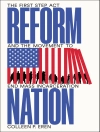Measuring Crime and Criminality focuses on how different approaches to measuring crime and criminality are used to test existing criminological theories. Each chapter reviews a key approach for measuring criminal behavior and discusses its strengths or weaknesses for explaining the facts of crime or answers to central issues of criminological inquiry. The book describes the state of the field on different approaches for measuring crime and criminality as seen by prominent scholars in the field.
Among the featured contributions are: The Use of Official Reports and Victimization Data for Testing Criminological Theories; The Design and Analysis of Experiments in Criminology; and Growth Curve/Mixture Models for Measuring Criminal Careers. Also included are papers titled: Counterfactual Methods of Causal Inference and Their Application to Criminology; Measuring Gene-Environment Interactions in the Cause of Antisocial Behavior and What Has Been Gained and Lost through Longitudinal Research and Advanced Statistical Models?
This volume of Advances in Criminological Theory illustrates how understanding the various ways criminal behavior is measured is useful for developing theoretical insights on the causes of crime.
عن المؤلف
John Mac Donald is Jerry Lee Assistant Professor of Criminology and the undergraduate chair of criminology at the University of Pennsylvania. His areas of focus in criminology include interpersonal violence, race and ethnic disparities in criminal justice, and the effectiveness of social policy responses to crime. In addition his work has appeared in numerous publications including Crime and Delinquency, Journal of Research in Crime and Delinquency, and Journal of Quantitative Criminology.












